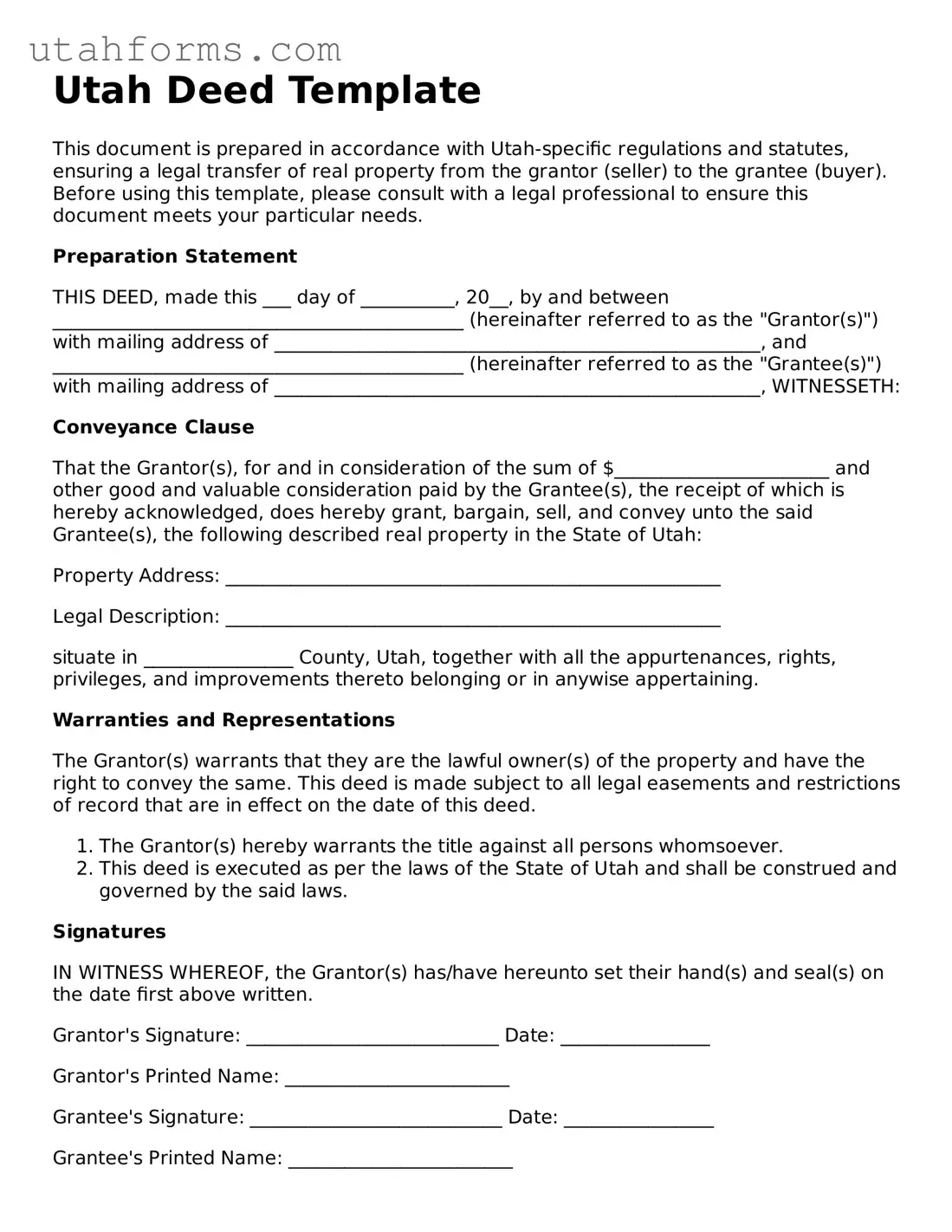Utah Deed Template
This document is prepared in accordance with Utah-specific regulations and statutes, ensuring a legal transfer of real property from the grantor (seller) to the grantee (buyer). Before using this template, please consult with a legal professional to ensure this document meets your particular needs.
Preparation Statement
THIS DEED, made this ___ day of __________, 20__, by and between ____________________________________________ (hereinafter referred to as the "Grantor(s)") with mailing address of ____________________________________________________, and ____________________________________________ (hereinafter referred to as the "Grantee(s)") with mailing address of ____________________________________________________, WITNESSETH:
Conveyance Clause
That the Grantor(s), for and in consideration of the sum of $_______________________ and other good and valuable consideration paid by the Grantee(s), the receipt of which is hereby acknowledged, does hereby grant, bargain, sell, and convey unto the said Grantee(s), the following described real property in the State of Utah:
Property Address: _____________________________________________________
Legal Description: _____________________________________________________
situate in ________________ County, Utah, together with all the appurtenances, rights, privileges, and improvements thereto belonging or in anywise appertaining.
Warranties and Representations
The Grantor(s) warrants that they are the lawful owner(s) of the property and have the right to convey the same. This deed is made subject to all legal easements and restrictions of record that are in effect on the date of this deed.
- The Grantor(s) hereby warrants the title against all persons whomsoever.
- This deed is executed as per the laws of the State of Utah and shall be construed and governed by the said laws.
Signatures
IN WITNESS WHEREOF, the Grantor(s) has/have hereunto set their hand(s) and seal(s) on the date first above written.
Grantor's Signature: ___________________________ Date: ________________
Grantor's Printed Name: ________________________
Grantee's Signature: ___________________________ Date: ________________
Grantee's Printed Name: ________________________
Notary Acknowledgment
STATE OF UTAH
COUNTY OF ________________
On this ___ day of __________, 20__, before me, a Notary Public in and for said State, personally appeared ________________________________________, known to me or satisfactorily proven to be the person(s) whose name(s) is/are subscribed to the within instrument and acknowledged that he/she/they executed the same for the purposes therein contained.
IN WITNESS WHEREOF, I hereunto set my hand and official seal.
Notary's Signature: ___________________________ Date: ________________
Notary's Printed Name: ________________________ My Commission Expires: __________
